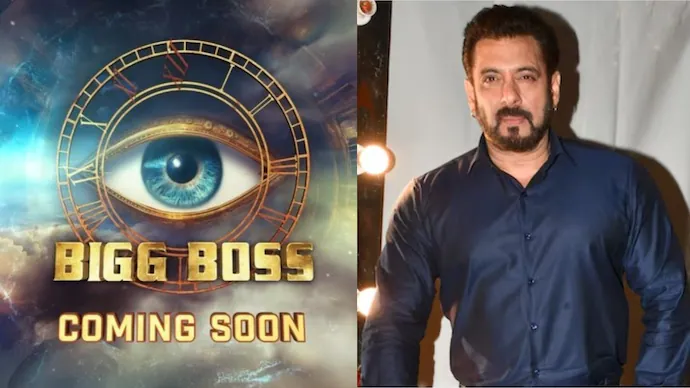Explore the true story behind Gunjan Saxena: The Kargil Girl. Learn how India’s first female combat aviator served in the Kargil War.
Gunjan Saxena: The Kargil Girl – Soaring Beyond Gender in India’s Skies
Gunjan Saxena True Story – India’s First Woman Warrior of Kargil War
Wings Against the Wind
In 1999, while the Kargil War raged across the Himalayan heights, a young Flight Lieutenant Gunjan Saxena defied odds—not just against Pakistan, but against the gravity of military patriarchy.
Netflix’s “Gunjan Saxena: The Kargil Girl“ (2020), starring Janhvi Kapoor, captures her journey from a dreamer in Lucknow to a pathbreaking pilot in the Indian Air Force (IAF). But how much of the story is fact—and how much is fiction?
This article peels back cinematic layers to spotlight the real Gunjan Saxena, her wartime service, and the symbolism of her flight.
🇮🇳 The Kargil War: A Brief Background
- Start: May 1999
- Peak Conflict Zone: Kargil, Drass, Batalik in J&K
- Opposition: Pakistani intruders disguised as militants
- India’s Operation: Operation Vijay
While the Army and Air Force jointly executed the mission, non-combat pilots like Gunjan Saxena and Flight Lt. Srividya Rajan became unsung heroes for their aerial reconnaissance and casualty evacuation roles.
👩✈️ Who Is Gunjan Saxena?
- Born: 1975, Lucknow, Uttar Pradesh
- Family: Army background – father and brother in the Indian Army
- Education: Hansraj College, Delhi University
- IAF Entry: 1994 via SSC (Short Service Commission)
- Posting: Udhampur Air Force Base, J&K
- Aircraft Flown: Cheetah (HAL-built light helicopter)
Gunjan joined the force when women were not allowed in combat roles, making her presence in a war zone truly historic.

⚔️ Real-Life Heroism During Kargil War
Her Role:
- Evacuation of injured soldiers
- Aerial surveillance of enemy positions
- Transport of supplies and medicines
- Drop missions in unarmed helicopters under fire
True Incidents:
- Flying in Drass Valley, one of the most active battle zones
- Narrow escape from a shoulder-fired missile aimed at her chopper
- Working 12-14 hour shifts, braving altitude sickness and rough terrain
- Was part of 13 sorties over hostile territory
She and Srividya Rajan became the first Indian women to fly into a combat zone, though unarmed.
“There was never a moment of fear. Only the thought of saving lives,” she once said.
The Movie: Fact vs. Fiction
Film Overview:
- Director: Sharan Sharma
- Lead Actress: Janhvi Kapoor
- Release: August 12, 2020 (Netflix)
- Production: Dharma Productions
The film presents an inspirational arc, focusing on gender barriers and her emotional journey with her father (played by Pankaj Tripathi).
| Element | Film | Reality |
|---|---|---|
| Training rejection due to gender | ✅ | Exaggerated for drama |
| Male pilot hostility | ✅ | IAF denies such extreme cases |
| Father as sole supporter | ✅ | Real family was supportive, but dramatized |
| Serving in Kargil | ✅ | Historically accurate |
| Solo missions in war zone | ✅ | Done with other pilots, including Srividya |
Real Gunjan’s View:
- Proud of the film, but clarified it was “only inspired by” her life.
- The IAF expressed concern over its portrayal of misogyny, noting that the force was supportive of women in uniform.
🛠️ IAF and Women: Then vs. Now
| Era | Women’s Roles |
|---|---|
| 1990s | Non-combat, logistics, medicine, transport |
| Post-2015 | Permanent commissions, fighter pilots allowed |
| 2023 | Over 1,800 women in IAF, including fighter stream |
Gunjan’s generation paved the way for future icons like Avani Chaturvedi, Mohana Singh, and Bhawana Kanth, India’s first female fighter pilots.
Performance Analysis: Janhvi Kapoor as Gunjan
- Underwent flight simulator training
- Practiced military bearing and body language
- Delivered a restrained, sincere performance, though critics noted a lack of emotional depth in some sequences
Pankaj Tripathi’s role as her father was universally praised, embodying the emotional pillar behind Gunjan’s flight.
Cinematic Style & Symbolism
The film leans on aesthetic simplicity:
- Soft background score
- Warm color tones to reflect memory and nostalgia
- Slow pacing to mimic the loneliness of the journey
- Use of real flight base locations (with VFX) for authenticity
Symbolism like broken ceilings, climbing stairs, and open skies are visual metaphors for her struggle against systemic barriers.
Public Reaction & Criticism
Acclaimed For:
- Humanizing female soldiers
- Highlighting an untold chapter of Kargil War
- Raising awareness about gender equality in defense
Criticized For:
- Over-simplification of IAF dynamics
- Lack of action sequences typical in war films
- Fictional dramatization of events and characters
Gunjan Saxena’s Post-War Life
- Completed her tenure in IAF (7 years)
- Retired as Flight Lieutenant
- Maintains a low public profile
- Lives in Delhi-NCR, works as a homemaker
- Advocates for gender-neutral opportunities
“We don’t need special treatment. Just an equal chance to prove ourselves.”
Honors & Legacy
Though she wasn’t awarded a gallantry medal, Gunjan Saxena’s legacy lives on through:
- A chapter in NCERT textbooks
- IAF women’s inclusion in war literature
- A biopic that reached millions globally
She remains an icon of quiet courage, an example of how heroism doesn’t always roar—it can also fly in silence.
Timeline Summary of Key Events
| Year | Event |
|---|---|
| 1994 | Joined IAF via SSC batch |
| 1996 | Commissioned as Flight Lieutenant |
| 1999 | Served during Kargil War |
| 2001 | Retired from IAF |
| 2020 | Biopic released on Netflix |
Lesser-Known Facts
- Gunjan’s helicopter did not carry weapons—missions were unarmed
- Her father, Lt. Col Anup Saxena, was her first inspiration
- She had no female seniors to look up to in flying ops
- The Kargil base had no female washrooms—a fact depicted accurately in the film
- She was just 24 years old during the Kargil conflict
Final Word: More Than a Girl Who Flew
“Gunjan Saxena: The Kargil Girl” is a cinematic retelling of a real milestone in India’s military history. While the dramatization takes liberties, it serves its larger purpose: to inspire generations of women to break barriers, fly high, and never let societal turbulence stall their dreams.
As her father says in the film:
“Plane ladka udaye ya ladki, dono ko pilot hi kehte hain.”
Sources & References
- “Flight Lt. Gunjan Saxena: The Real Story” – Times Now
- Indian Express interview with Gunjan Saxena
- Official Kargil War White Papers, Government of India
- Ministry of Defence Archives
- Interviews with Sharan Sharma, Janhvi Kapoor
- Indian Air Force Women in Combat report (2021)
Also read: URI: The Surgical Strike – A Cinematic Tribute to India’s Covert Military Brilliance
Last Updated on Wednesday, May 14, 2025 1:53 pm by Admin









